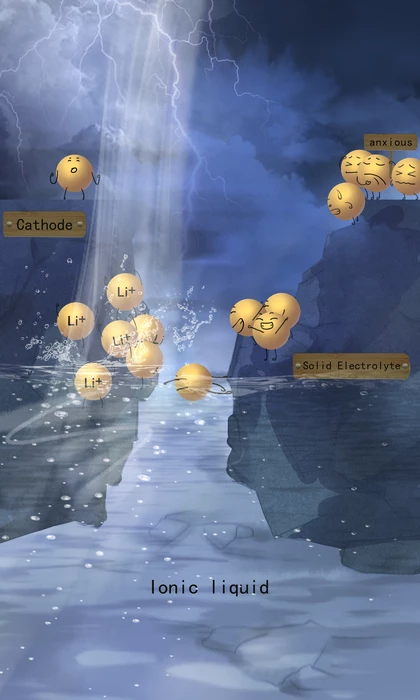Scientists at Japan's Tokyo Metropolitan University have taken aim at a common problem plaguing next-generation lithium metal batteries, finding a promising solution in a salty liquid that reduces problematic resistance between key components. The result is a prototype battery with greatly improved stability, pointing to promising new pathways for a battery chemistry with exciting potential.
Lithium metal batteries are seen as a hugely exciting prospect in the realm of energy storage, as pure lithium metal offers incredibly high energy density. Using it in place of the graphite and copper that make up one of the electrodes in today's batteries could therefore bring about massive performance gains, allowing smartphones to run for days for example, or electric cars to travel much farther on each charge.
However, these batteries have been held back by stability issues so far, and one way scientists are working to overcome these is by swapping out liquid components for solid ones. Known as solid-state batteries, the design would see the lithium ions that carry the battery's charge travel through a solid electrolyte material rather than a liquid one. But these too have their shortcomings, among which is instability at the interface between the solid electrolyte and the battery's electrodes.
Experimenting with alternative materials and other design tweaks at this vital intersection has brought about some promising advances of late, with scientists demonstrating self-assembling protective layers and a butter-like paste as potential solutions. The team at Tokyo Metropolitan University has approached this problem by producing a "quasi-solid-state" electrode for use in a solid-state lithium metal battery.
The researchers were working with a promising solid electrolyte candidate called LLZO, which is known to interface relatively well with lithium metal anodes, but causes high resistance when interfacing with conventional cathodes. The idea was to improve the contact and reduce resistance between the solid ceramic electrolyte and the cathode, by adding a dose of room-temperature ionic liquid, which is salt in a liquid state.

Doping their lithium cobalt oxide cathode with the ionic liquid filled tiny voids in the interface between it and the solid electrolyte, which significantly reduced any resistance and promoted ion transport, as the ionic liquid is also ionically conductive. Further, unlike the liquid electrolytes used in today's batteries, the ionically conductive liquid is non-volatile and typically non-flammable.
A prototype battery featuring this novel, quasi-solid-state cathode showed impressive stability, maintaining 80 percent of its capacity over 100 charge and discharge cycles at high temperatures of 60 °C (140 °F). The team still has much work to do to make the technology a commercial reality, like fine-tuning the makeup of the ionic liquid to prevent degradation, but see the breakthrough as the basis for new avenues in pursuit of solid-state lithium metal batteries.
The research was published in the journal iScience.
Source: Tokyo Metropolitan University via EurekAlert




